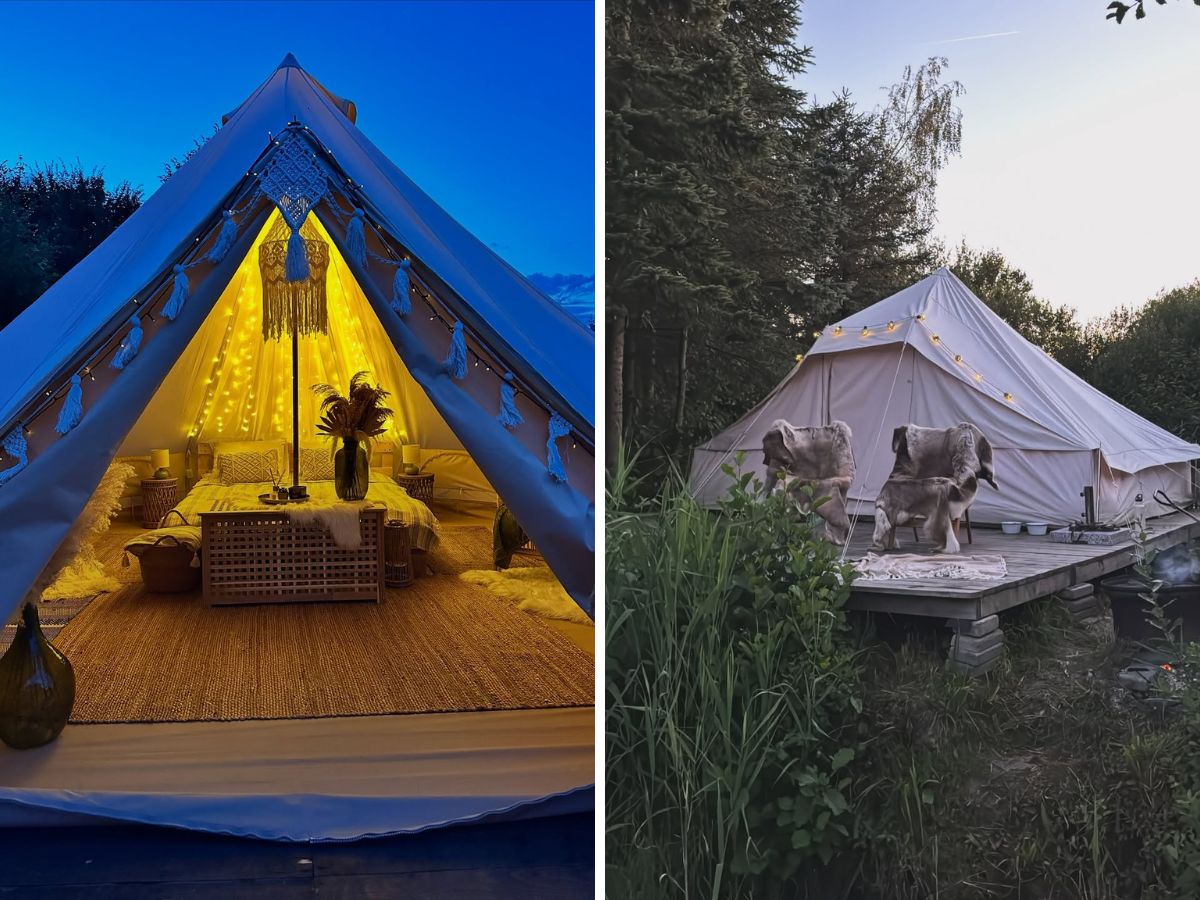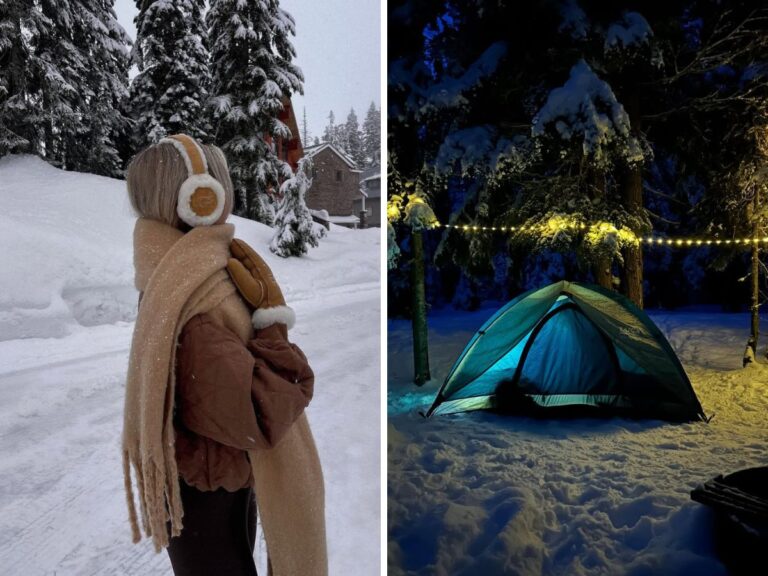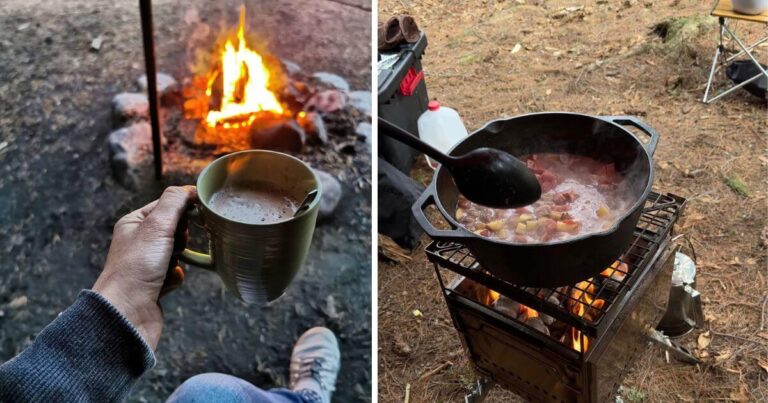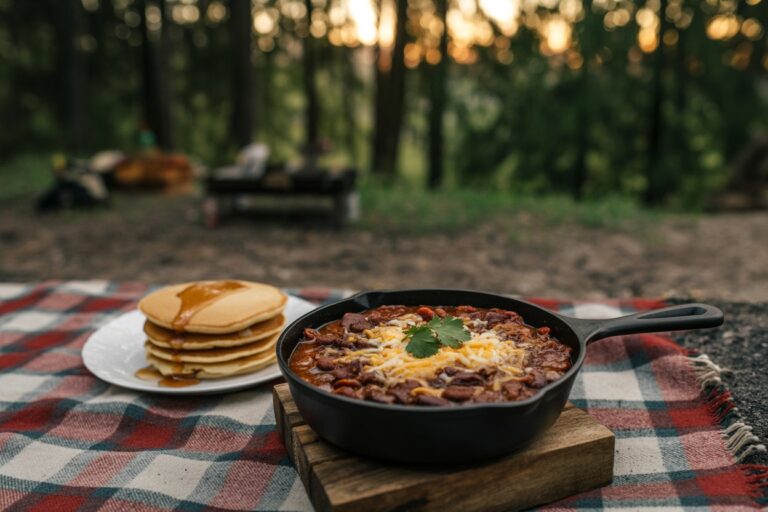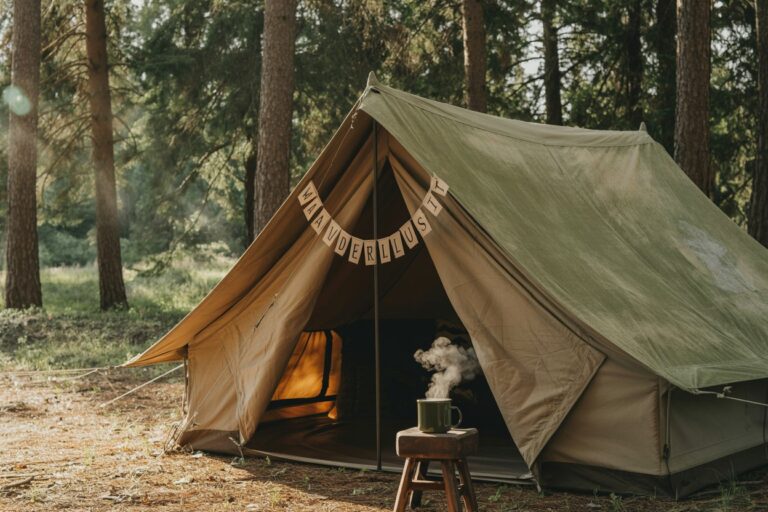Glamping Ideas So Good You’ll Want to Stay Outside All Season
The first time I tried glamping, I set up a canvas tent on a quiet ridge and stepped inside expecting the usual camping feel.
Instead, warm light bounced off the canvas, a soft blanket waited on a raised cot, and the whole space felt calm in a way I didn’t expect. I remember sitting there for a moment, hearing nothing but wind moving through the trees, and thinking that comfort outdoors doesn’t take away from the trip at all. It lets you settle in, breathe deeper, and stay present with everything around you.
I’ve seen that same feeling return on trip after trip, and you can create it too.
If you want a stay that feels cozy, simple, and easy to enjoy, these ideas help you shape a tent into a place you look forward to at the end of the day. Let’s break it down so your next glamping trip feels like something you never want to rush.
Choose the Tent That Sets the Tone for Glamping
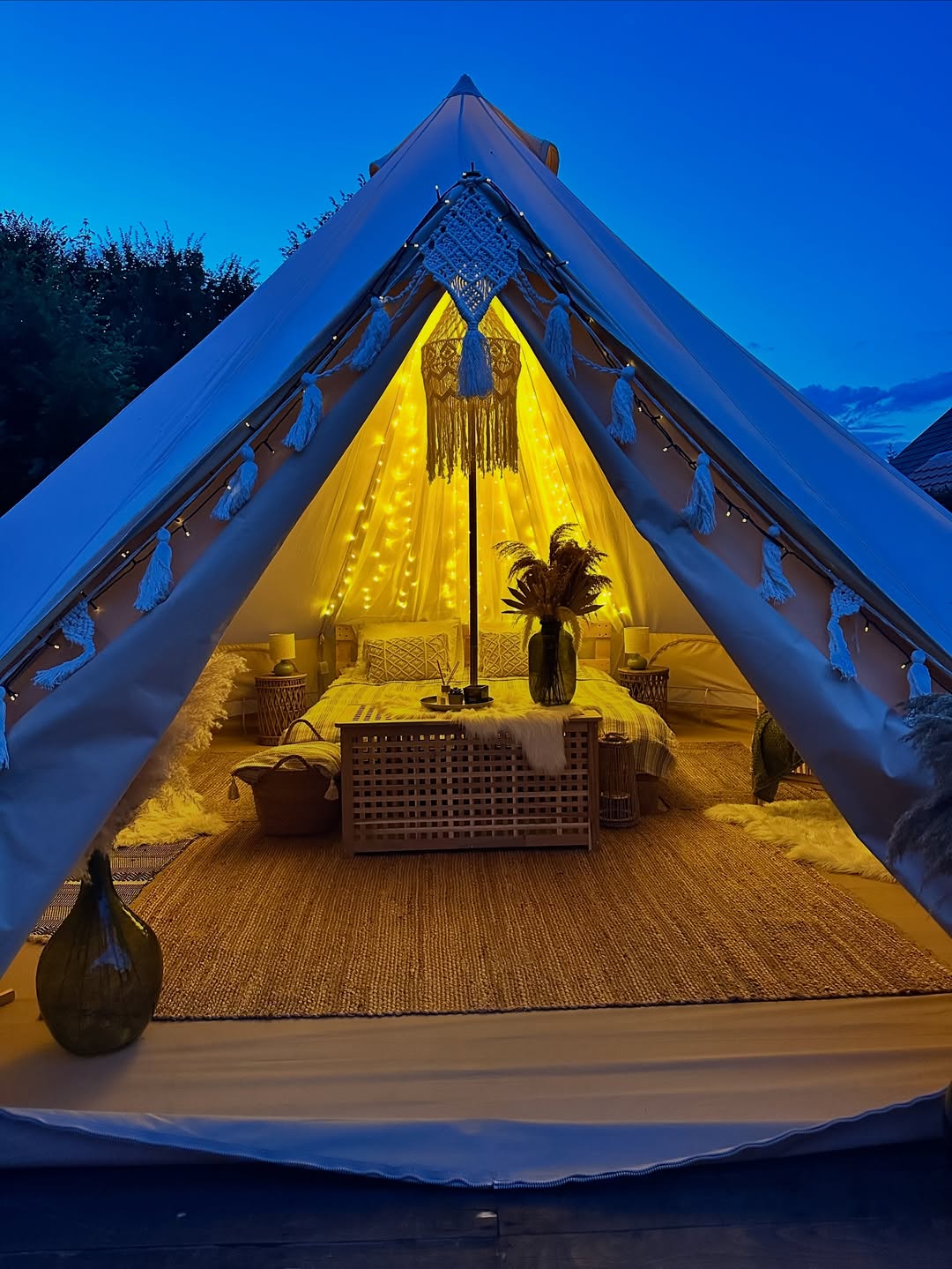
Start with a tent that feels like a space you actually want to live in for a few days. Pick one with room to stand, stretch, and move without brushing against gear.
Canvas bell tents stay cooler in warm months and give you that wide, open feeling when you wake up. Dome tents pack light and work well for shorter trips. Wall tents feel closer to a small cabin, which helps on longer stays.
Travel + Leisure explains that the comfort people love about glamping comes from simple upgrades like tall ceilings, wide doors, and layouts that give you a little breathing room. You can recreate that same comfort even if you’re setting up in your backyard or a quiet forest.
Lay a ground tarp before pitching the tent so the space stays dry. Bring strong stakes if the weather shifts. Keep zipper paths brushed clean with a soft cloth so they last longer. I always check this part because a stuck zipper can throw off the whole mood when the wind picks up.
Once your tent feels steady, your sleep setup becomes the heart of the space.
Build a Bed Setup That Lets You Sleep Deep
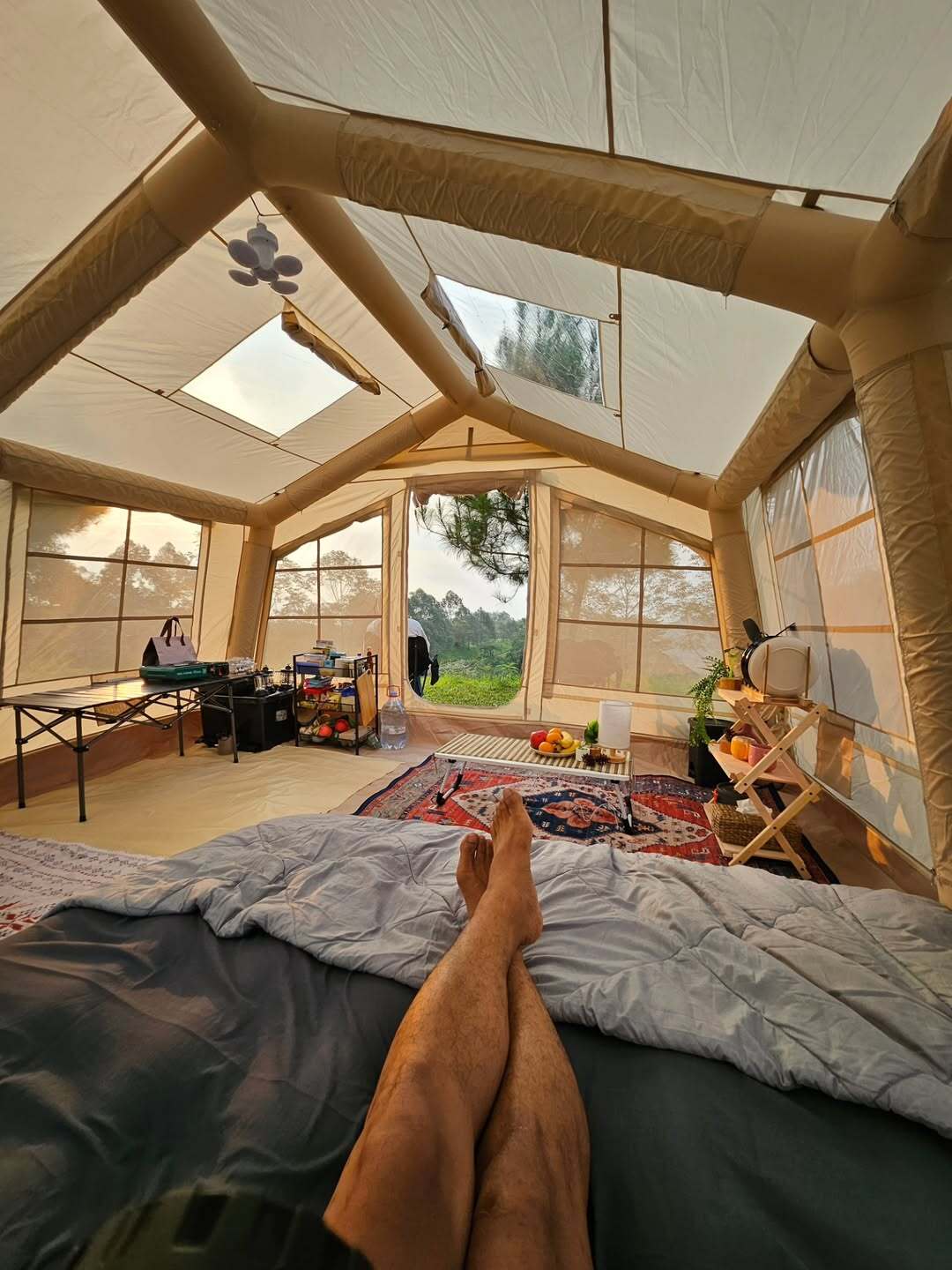
Sleep can change how your whole trip feels. A raised cot or firm pad keeps you off the cold ground and gives your back a break. Add a fitted sheet, a soft throw, and a pillow that doesn’t flatten out.
I learned this during a chilly night in Utah when I kept waking up until I swapped in a pillow with real support. The difference the next morning was huge.
REI points out that bringing real bedding is one of the simplest ways to turn a tent into a calm, steady place to rest. That small step makes you want to stay outside longer.
Keep a pair of warm socks set aside just for sleep. If nights run cold where you’re glamping, tuck a light blanket near your feet. These tiny comforts carry you into the next part of the setup: lighting that shapes the mood.
Use Lighting That Makes the Space Feel Cozy
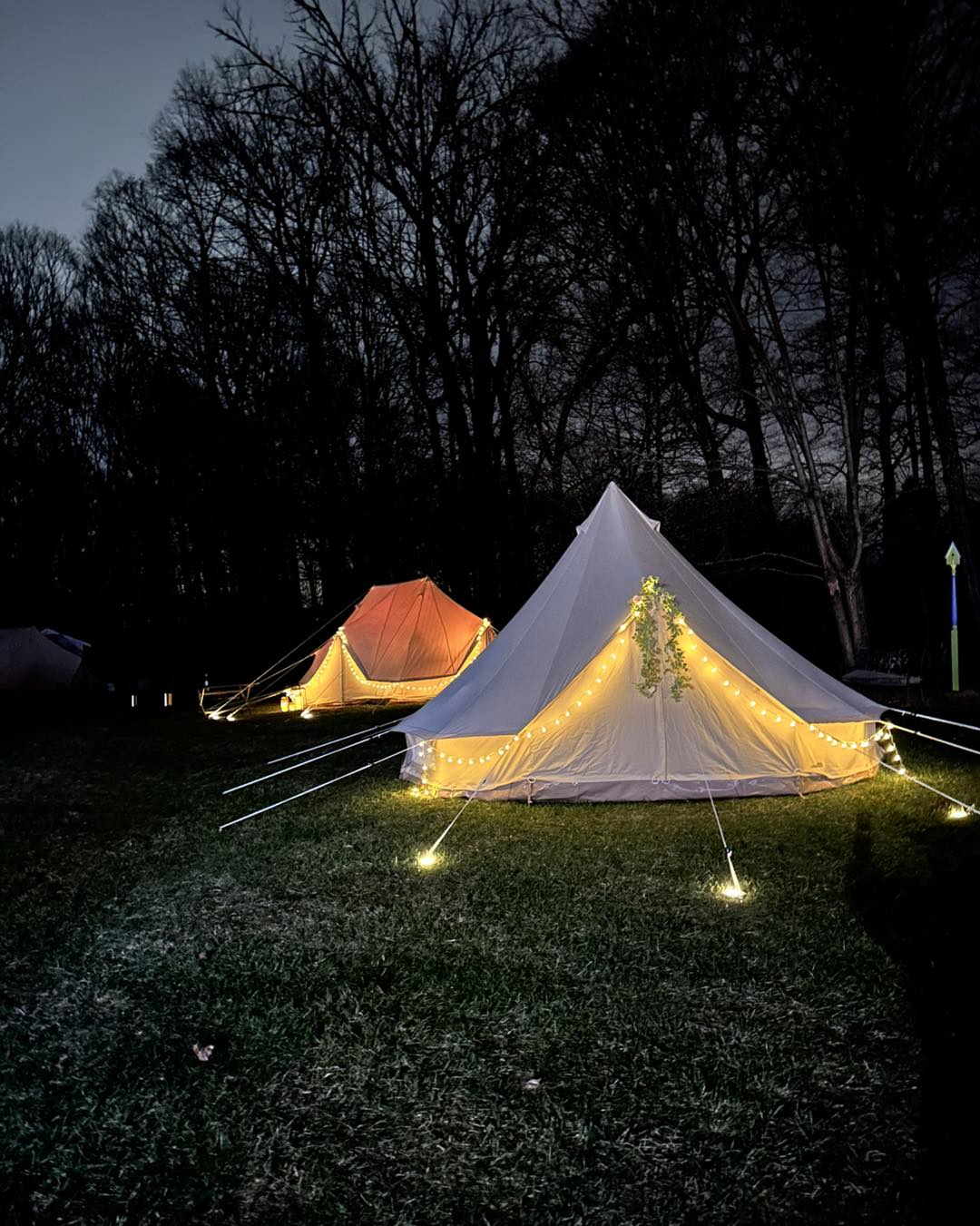
Light decides how your tent feels after sunset. I wrap soft string lights around the frame so the space glows instead of glaring. A warm lantern near the bed adds a calm tone, and a small headlamp by the door helps when I step out late at night.
Warm, soft lighting also keeps insects from swarming around you. It turns the tent into a slow, peaceful place at the end of the day, the kind of space where you want to sit quietly for a few minutes before turning in.
Once your nights feel settled, it becomes easier to plan the part everyone looks forward to: food.
Set Up a Cooking Area That Saves Time
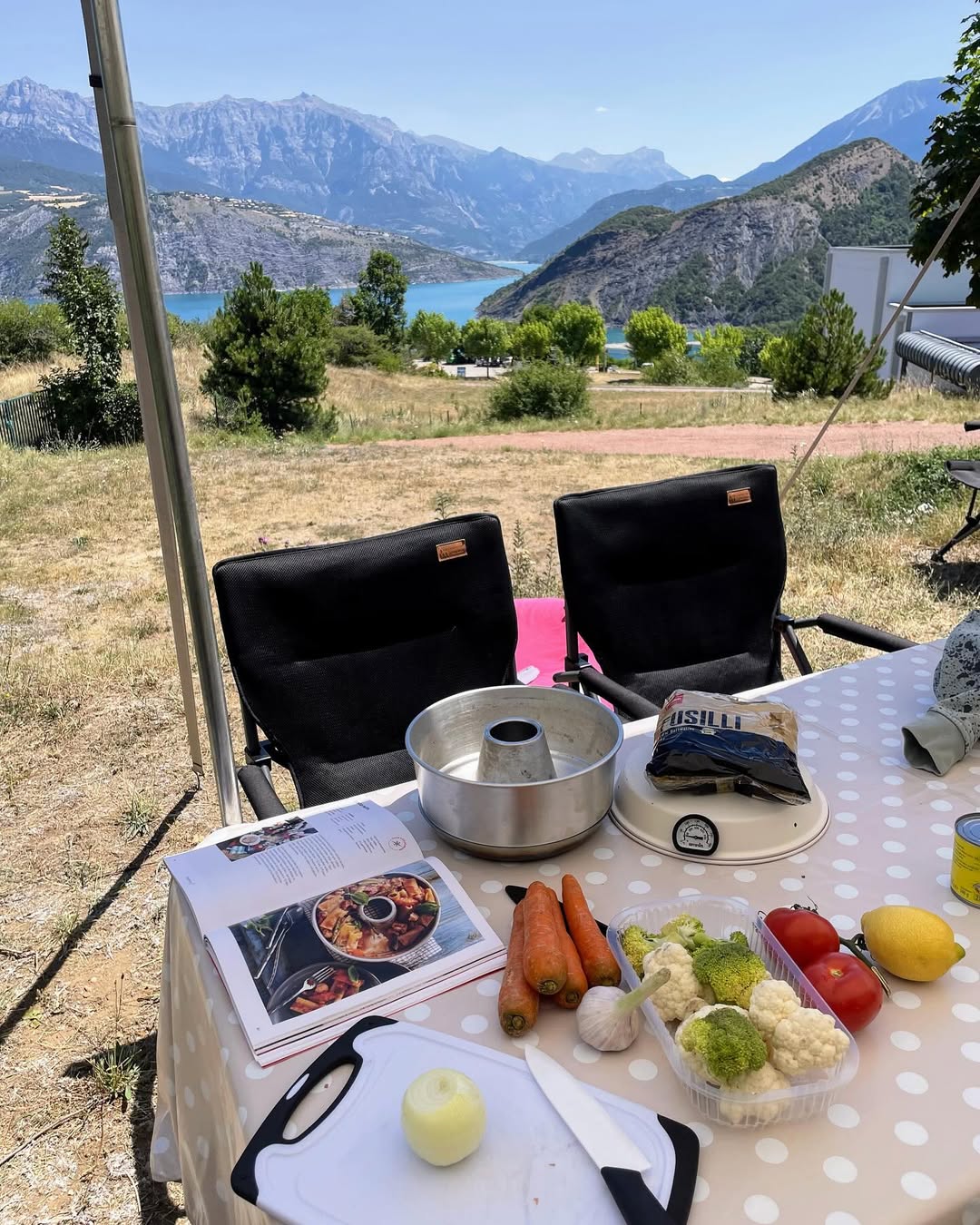
You don’t need a full kitchen to eat well outside. All you need is a little structure. I keep two tables when I’m glamping. One holds the burner and a wind guard, and the other stays open for chopping, mixing, or packing snacks for later. When everything has a place, meals come together without stress.
A small washing tub helps more than people expect. Fill it halfway, keep soap nearby, and wash plates right after eating. That quick rhythm makes your camp feel steady instead of chaotic.
Odisha Eco Retreats gives the same advice, pointing out that simple setups and fast cleanup routines make outdoor meals feel relaxed.
On one of my longer stays in New Mexico, I kept my stove near a small shade tarp so the midday sun didn’t hit me while cooking. That tiny change made lunch prep feel easy instead of draining. Small tweaks like that help you enjoy the space instead of rushing through it.
Once your cooking area feels calm, you can shape a spot that invites you to slow down after meals.
Create a Lounge Space That Feels Like a Backyard
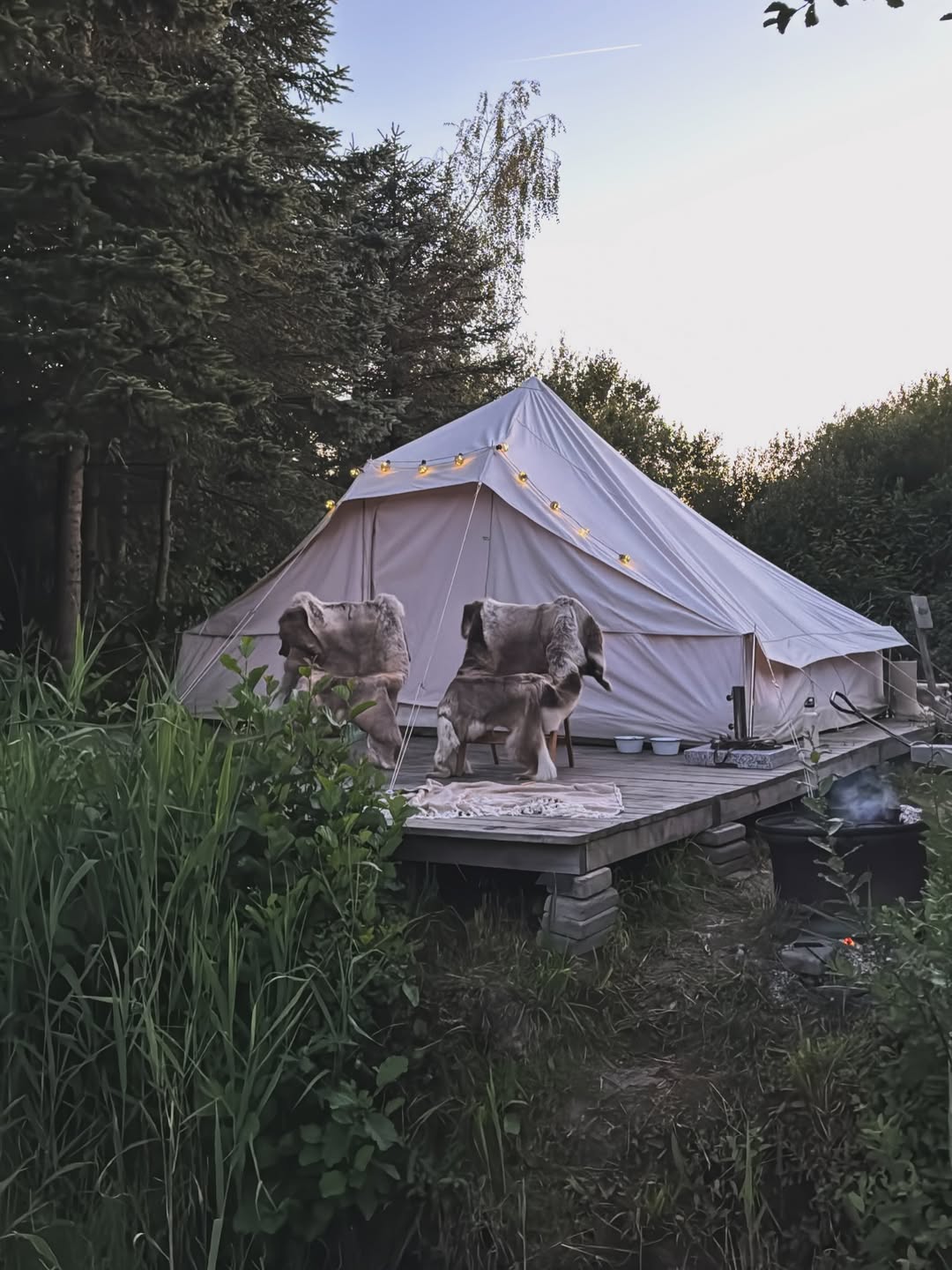
A good lounge corner changes everything. This is where you sip coffee, stretch your legs, or read when the sun drops. I start with one or two chairs that actually support my back. Then I add a small rug near the tent door so dust stays outside. A low table holds a drink, a book, or my camera when I’m editing photos.
Lonely Planet shares that glamping feels special when you create small spaces that feel lived in. That’s exactly what this corner does. It gives you a place to land at any time of day.
I remember one trip in Colorado where I set my chair so it faced a line of pines. Every evening, the light came through the trees in long strips, and that simple view made the whole place feel like a backyard tucked inside a forest. That’s the feeling you want your lounge space to give you.
When your body has a place to rest, the next step is adding warmth that makes the inside of your tent feel personal.
Bring Small Decor That Makes It Feel Personal

Decor doesn’t need to be fancy. One patterned throw can soften the look of the tent. A warm lantern changes the mood as soon as the sun drops. Cushions help your chair feel more like a seat you’d sink into at home. Small details go a long way when you’re spending days outside.
I like keeping a small bin for toiletries and clothes right near the tent wall. It keeps the space clean and gives everything a home, which helps the tent feel calm even on longer stays.
These touches matter most at night, when the air gets cooler and you want the tent to feel like a place you look forward to stepping into.
Stay Warm Once the Sun Drops

Nights outdoors feel calm, but they cool down fast. The shift usually hits right after sunset, when the air gets still and the ground starts holding the cold. A tent-safe heater works if you’re camping in lower temps, though I always double-check safety notes before packing one. Most nights, I stick to warm layers, wool socks, and a good blanket near the bed.
I keep a small thermos next to my cot so I can sip something warm before sleeping. That habit started on a windy night in Montana when the temperature dropped quicker than I expected. One cup of tea made the whole tent feel softer and easier to settle into.
KOA shares that extra blankets, cots, and warm layers help travelers rest outside in a way that still feels close to home. Their advice lines up with what I’ve learned over the years.
Once your body stays warm through the night, you’re ready to handle the part of outdoor life everyone expects to deal with sooner or later: insects.
Keep Bugs Out Without Harsh Sprays
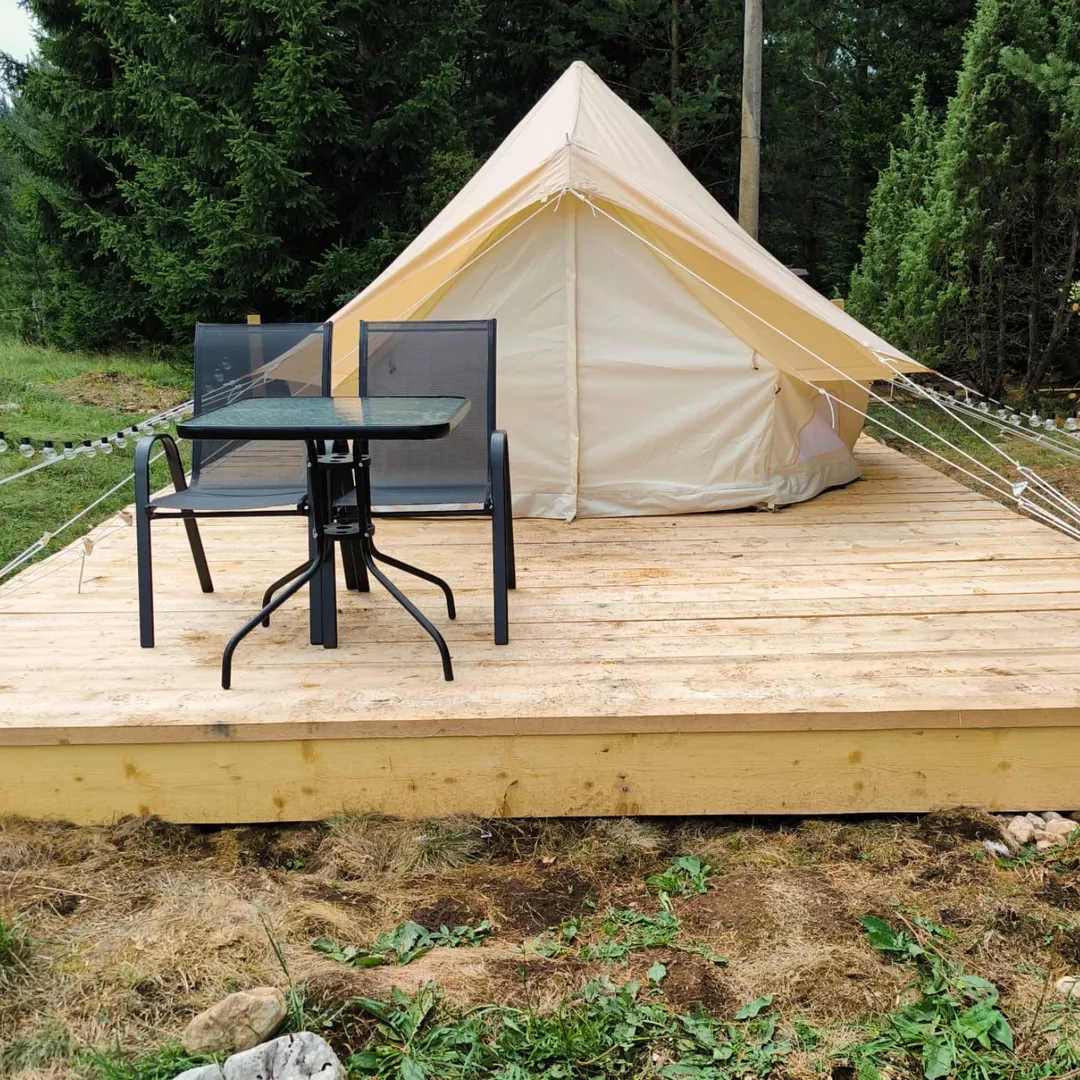
Bugs can pull you out of the moment fast, especially in warm months. Mesh screens help a lot, so keep doors zipped and windows screened when the sun starts to drop. Seal food right after eating and wipe down any surface you used for cooking. I’ve learned that one quick clean-up does more than any spray.
Keep your lantern and string lights on their lowest setting at night. Soft light draws fewer insects, and it makes the whole tent glow in a warm, quiet way.
The CDC explains that screened spaces, long sleeves, and EPA-registered repellents offer the most reliable protection for travelers. That combo keeps the tent comfortable even in mosquito-heavy areas.
Once insects stop bothering you, you can focus on something that makes glamping mornings easier: a small, organized bathroom space.
Build a Small Bathroom Corner
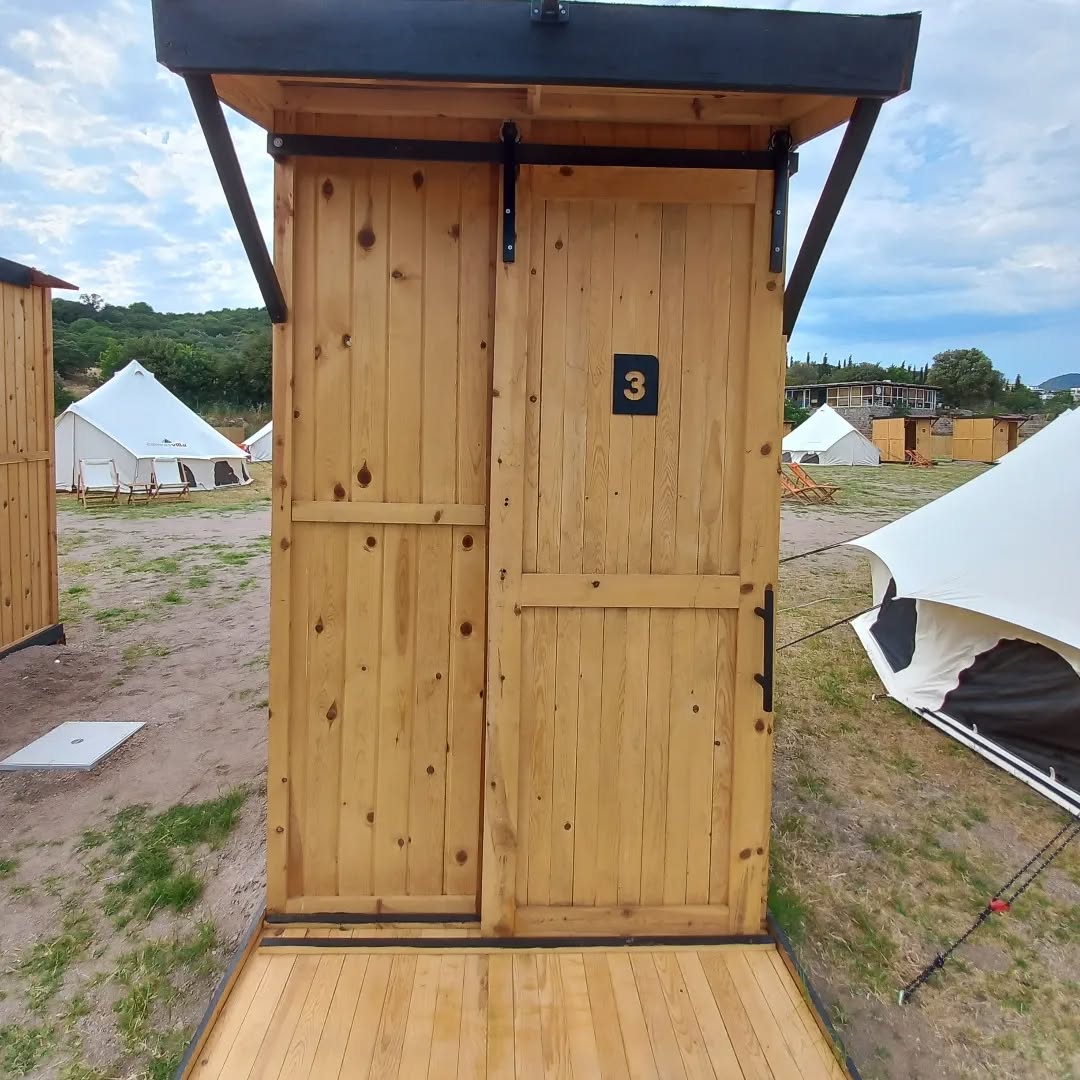
A bathroom corner doesn’t have to be complicated. A privacy tent works for changing clothes, washing your face, and handling quick nighttime trips. I keep a water jug, biodegradable soap, and a quick-dry towel inside so everything is in one place.
A dim lantern in this corner helps more than people expect. I’ve had nights where stepping outside half-asleep was a mess, so that low light saves you from stumbling around or digging through bags.
When your bathroom setup stays simple and calm, mornings feel lighter. You get up, wash, stretch, and step into the day without scrambling for gear. And once your morning starts smoothly, everything else on the trip falls into place.
Make Mornings Smooth
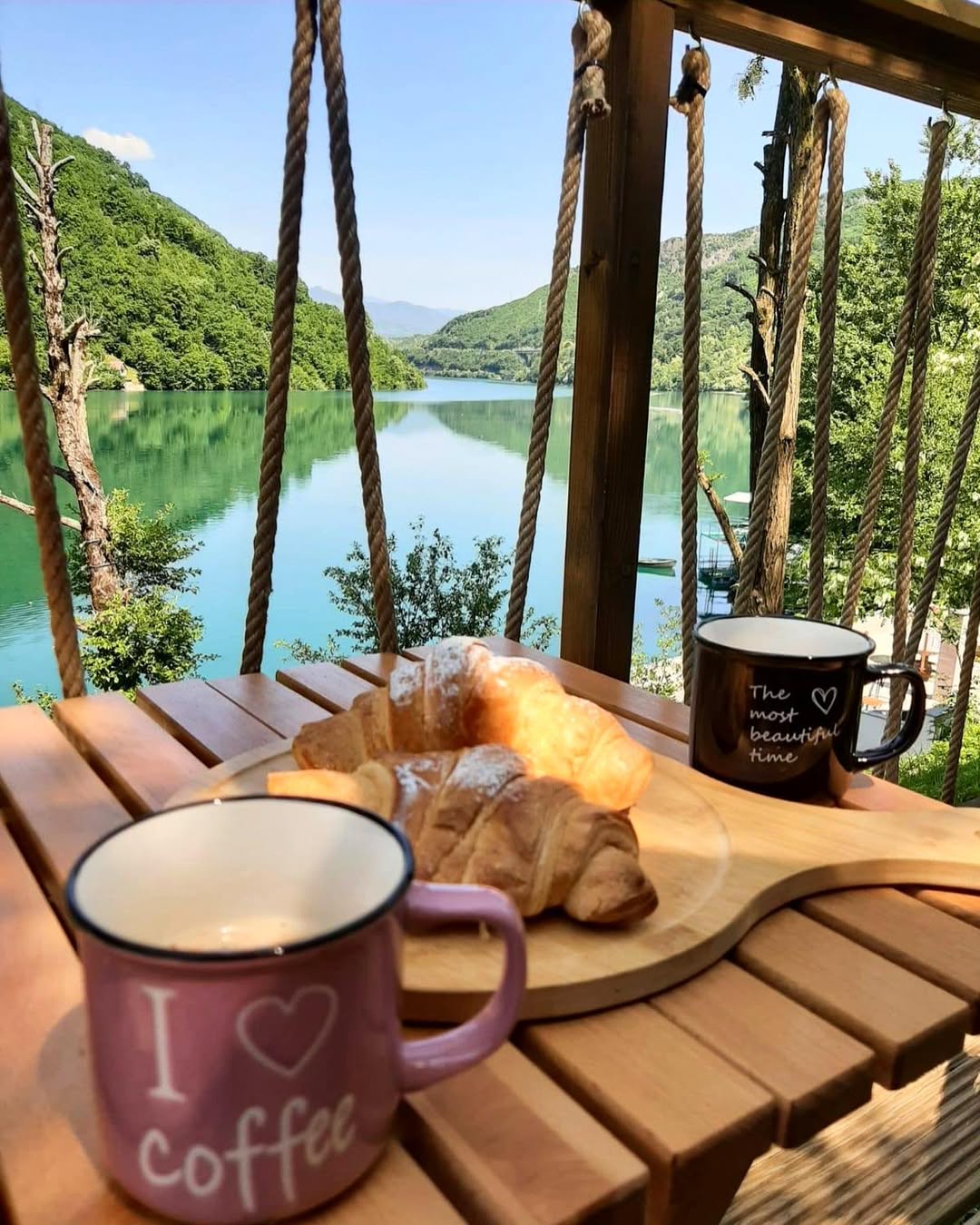
Mornings outdoors feel different. The light comes in slow, the air is cool, and everything is quiet in a way that makes you want to ease into the day. A drink station right outside the tent helps with that. Set your mug, kettle, and coffee out the night before so you only need to heat water. That small setup saved me on a foggy morning in Oregon when my hands were too cold to dig through bags.
Warm socks near the door help the ground feel less sharp when you step out. Keep breakfast simple. A quick bowl of oats, a toasted bagel, or fruit keeps cleanup short so you’re not scrubbing dishes while you’re still waking up.
When mornings flow smoothly, the rest of the day feels lighter. Once that routine is set, you can bring in one tech item that makes the whole trip easier.
Pack One Useful Tech Item

You don’t need a lot of tech to enjoy glamping. One piece is usually enough. A power bank keeps your phone alive for maps or photos, and a small fan helps on warm nights. I sometimes bring a mini projector when I’m staying somewhere quiet. On cloudy nights, I play a movie on the tent wall and it turns the space into a tiny theater.
Keep it simple so the outdoors stays the main focus. A little tech goes a long way when everything else around you slows down.
Once your comfort items are covered, it’s time to plan for weather. Good prep turns surprise conditions into something you can handle.
Be Ready for Weather Shifts
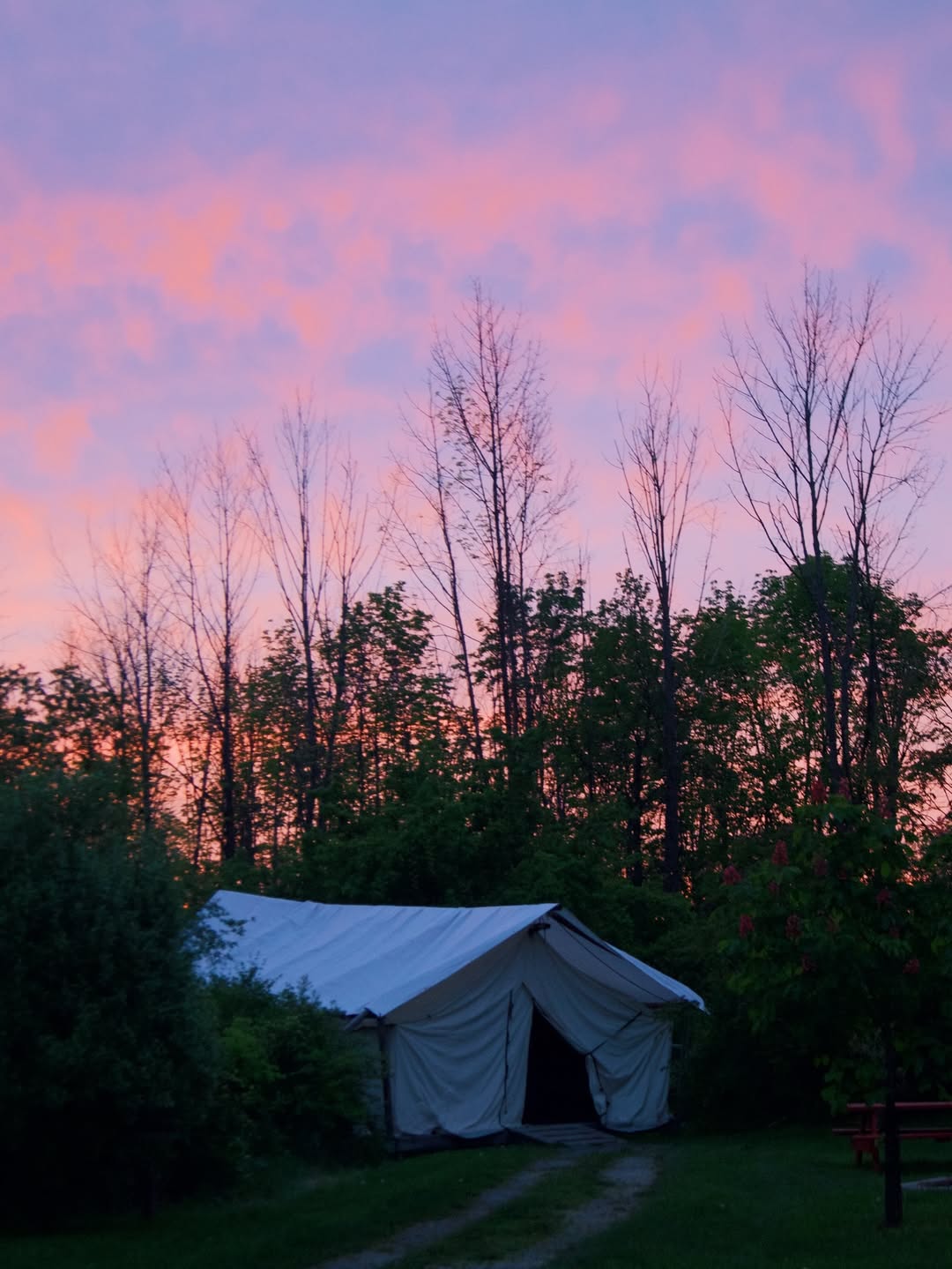
Weather outdoors has a mind of its own. A sunny morning can turn into a gray afternoon before you even finish lunch. A small rain shelter helps when showers roll in. I’ve used a tarp strung between two trees more times than I can count. It keeps gear dry and gives you a dry place to sit while the clouds move past.
Keep clothes off the ground and store bedding inside sealed bags. If the sky starts to look heavy, tighten your guy lines before the wind picks up. That five-minute routine saved my tent during a storm outside Moab when the gusts came in fast.
When the weather clears again, the evenings become the best part of the day. And nothing shapes a calm night more than a safe fire.
Build a Safe Fire Area

A well-set fire changes the feel of a campsite. Clear the ground so sparks stay contained. Check local rules before lighting anything. Keep water close so you can manage the flames without stress. I like to keep the fire small and steady so the heat rolls out gently instead of rushing up.
Before sleeping, pour water over the embers and stir the ashes until they’re cool. The National Park Service explains that careful fire habits protect both you and the surrounding area, which is something you notice once you’ve camped in enough places.
When the fire fades and the night settles in, your whole site starts to feel like a small retreat wrapped in quiet. It’s the kind of moment that makes glamping worth it.
If you’re planning your first glamping trip or want to make your next one feel smoother, a few questions always come up. Here are the ones people ask the most, along with simple answers that help you feel prepared before you even pack.
FAQs about Glamping
What should I pack for a simple glamping trip?
Bring a tent you trust, warm bedding, soft lighting, a small cooking setup, and clothes that match the weather. Add a power bank, warm socks, and a blanket you don’t mind getting dusty. Most trips feel easier when you keep things lightweight and cozy.
Do I need special gear for glamping?
Not really. A raised cot, a good lantern, and a table for cooking can change the whole stay. The rest comes down to comfort items you already own, like pillows or throws.
How do I stay warm at night?
Layer up and keep a warm drink nearby. A tent-safe heater can help in colder locations, but warm socks and a thick blanket often do the job.
How do I keep bugs away without strong sprays?
Use screens on windows and doors, seal food, and keep your lights on a low setting. EPA-registered repellents can help if insects are active where you’re staying.
What’s the easiest glamping meal setup?
A small burner, a wind guard, and one tub for quick dishwashing. Keep breakfast simple and plan dinners you can cook in one pan.
Can I bring tech without losing the outdoor feel?
Yes. One item is enough. A power bank or a mini projector adds comfort without pulling you out of the moment.
Is glamping safe during rain or wind?
With steady stakes, a ground tarp, and guy lines tightened early, most tents handle shifts in weather well. Keep clothes off the ground and store bedding inside sealed bags to stay dry.
Final Thoughts
Glamping turns the outdoors into a place where comfort and quiet sit together.
A good tent, warm light, and a few small touches can turn any patch of land into a retreat you look forward to coming back to. The ideas in this guide come from nights where I learned what helps, what doesn’t, and what makes the whole space feel calm.
If you’ve tried glamping or want to plan your first trip, I’d love to hear how you’re setting up your space.
Drop a comment and tell me where you’re going next or what you hope your setup will feel like.

